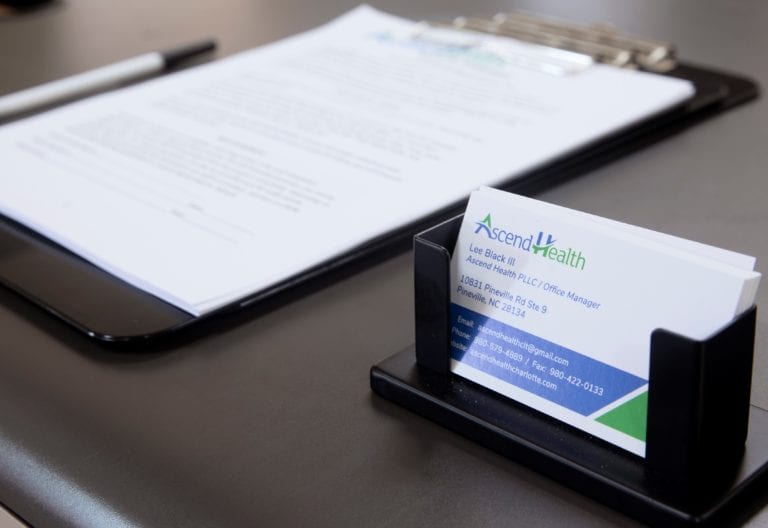Understand outpatient suboxone care
When you’re researching affordable suboxone outpatient care, you need to understand how these programs work and why they’re a preferred option for many seeking opioid recovery. Outpatient medication-assisted treatment (MAT) combines buprenorphine-naloxone (Suboxone) with counseling and support services, allowing you to receive care without an overnight stay. This model balances flexibility, evidence-based therapy, and privacy so you can maintain work, family, or daily commitments while pursuing lasting recovery.
What outpatient MAT involves
Outpatient Suboxone programs typically include:
- An initial medical assessment with a licensed clinician
- Titration and monitoring of buprenorphine-naloxone dosage
- Individual or group counseling sessions
- Regular drug screenings and progress reviews
This combination ensures that you receive medical supervision alongside behavioral therapy, addressing both the physical and psychological aspects of opioid use disorder.
Key advantages for patients
Choosing an outpatient setting offers you:
- Greater scheduling flexibility than inpatient care
- Reduced costs compared to residential programs
- Continued support in your home environment
- Confidential treatment that fits your lifestyle
Overall, outpatient care helps you maintain routine while accessing comprehensive recovery services tailored to your needs.
Evaluate cost considerations
Making MAT affordable involves understanding how insurance, assistance programs, and out-of-pocket expenses interact. By comparing your options, you can find a plan that minimizes cost without sacrificing quality.
Insurance coverage options
Most major insurers cover Suboxone as part of MAT. You can verify your benefits through an insurance verified MAT program. Common coverage pathways include:
Medicaid and Medicare
- States that expanded Medicaid under the ACA include substance use treatment in covered services
- Prior authorization may be required and coverage limits can apply [1]
- Many Medicaid plans fully cover medication costs or impose minimal copays
Private insurance and copays
- Copays for a one-month supply of Suboxone range from \$30 to \$540, depending on your plan and whether you choose generic or brand-name formulations [2]
- Copay assistance programs can reduce monthly costs by up to \$75 for privately insured patients
Manufacturer discount programs
- Suboxone’s manufacturer offers a discount card for uninsured individuals, lowering costs to as little as \$86 per month for eligible patients
- Hospitals and clinics may provide charity care or sliding-scale fees for medication
Typical out-of-pocket expenses
Outpatient drug-free programs historically cost about \$6,300 per successfully treated case (1990 dollars) and remain among the most cost-effective treatment modalities [3]. Factoring inflation and medication costs, you might expect:
| Item | Estimated cost range |
|---|---|
| Monthly Suboxone supply (generic) | \$30–\$150 |
| Monthly Suboxone supply (brand) | \$200–\$540 |
| Counseling sessions | \$50–\$150 per visit |
| Drug screenings | \$20–\$50 per test |
Cost-effectiveness analysis
Every dollar invested in substance abuse treatment returns \$4 in healthcare savings and \$7 in criminal justice savings [4]. Outpatient MAT not only lowers personal expenses but also generates social benefits:
- Reduced emergency department visits
- Lower incarceration rates
- Improved employment outcomes
These figures underscore why you should consider outpatient Suboxone care as both an affordable and impactful choice.
Explore program features
When evaluating providers, look for programs that combine medical expertise, confidentiality, and convenient access to care.
Licensed clinicians and confidentiality
A quality outpatient Suboxone treatment program partners you with:
- Board-certified addiction specialists
- Licensed therapists trained in cognitive behavioral therapy
- Clinical staff experienced in co-occurring mental health disorders
All patient information is protected under HIPAA, ensuring that your MAT journey remains private and secure.
Telehealth and rapid access
Telehealth services make it easier to start and maintain your Suboxone treatment without in-person visits.
Telehealth appointments
You can book telehealth Suboxone clinic appointments to:
- Initiate buprenorphine-naloxone induction remotely
- Receive follow-up consultations from home
- Access counseling via video sessions
Same-day appointment option
If you need immediate support, many providers offer a same day Suboxone appointment, ensuring you don’t experience unnecessary delays in care.
Comprehensive support services
Effective outpatient programs may also include:
- Peer support groups
- Case management for housing or employment assistance
- 24/7 helpline for crisis intervention
- Referrals to specialized services like sublocade injection treatment program
By combining medication with wraparound support, these centers address the full spectrum of recovery needs.
Compare treatment modalities
Understanding how outpatient MAT fits into the broader treatment landscape helps you make an informed choice.
Outpatient drug-free vs MAT
| Modality | Key features |
|---|---|
| Outpatient drug-free | Counseling and 12-step models, no medication |
| Outpatient MAT (Suboxone) | Buprenorphine-naloxone plus counseling, lower relapse rates |
| Residential MAT | Inpatient stay, higher intensity, greater cost |
Outpatient MAT often yields better retention and abstinence outcomes compared to drug-free programs, with lower costs and minimal disruption to daily life.
Suboxone vs naltrexone
Suboxone and extended-release naltrexone are both FDA-approved for opioid use disorder, but they differ in cost and induction requirements:
| Medication | Induction requirements | Cost impact | Effectiveness |
|---|---|---|---|
| Buprenorphine-naloxone | Can start during mild withdrawal | Lower overall cost | Lower overdose risk |
| Extended-release naltrexone | Requires complete detox before initiation | \$5,317 more over 24 weeks | Similar efficacy at 36 weeks |
In cost-effectiveness analyses, buprenorphine-naloxone dominated naltrexone from both health sector and societal perspectives, making it the preferred first-line option for most patients [5].
Find the right provider
To secure affordable care that works for you, consider how providers handle insurance, privacy, and payment options.
In-network suboxone treatment
Using an in-network suboxone treatment provider can minimize your out-of-pocket costs. Check with your insurer for participating clinics and pharmacies.
Programs accepting medicaid or aetna
If you have public insurance, search for a MAT clinic accepting Medicaid. For Aetna members, find a suboxone program that accepts Aetna to ensure coverage.
Private pay and confidential services
If you prefer self-pay or need extra privacy, explore private pay Suboxone treatment and confidential outpatient MAT services. Many clinics offer sliding-scale fees and discreet billing to safeguard your confidentiality.
Take next steps
With a clear understanding of costs, coverage, and program features, you can move forward confidently.
Verify insurance and schedule
- Contact your insurance provider to confirm Suboxone coverage.
- Use an outpatient MAT program accepting insurance directory to find qualified clinics.
- Book your appointment online or call for a same-day slot.
Prepare for your first visit
- Gather IDs, insurance cards, and medical history
- List your current medications and dosage history
- Note any co-occurring conditions or previous treatment experiences
Being prepared helps your clinician tailor the MAT plan from day one.
Maintain progress and follow-up
Recovery is an ongoing journey. Stay engaged by:
- Attending scheduled follow-ups
- Participating in counseling or support groups
- Tracking your milestones and setbacks
- Adjusting your treatment plan as needed
Ongoing communication with your care team ensures you continue on the path to long-term stability.
By choosing affordable outpatient Suboxone care with verified insurance support, licensed clinicians, and flexible access options, you’re investing in a proven, cost-effective approach to opioid recovery. Take the first step today toward a healthier, more empowered future.



